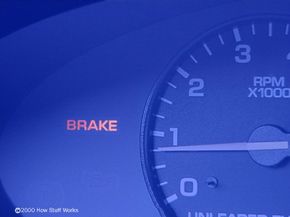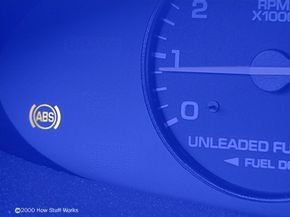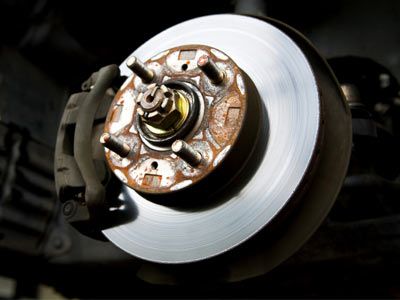Most cars have one or two brake warning lights on the dashboard. When you first start your car, all of the lights on the dashboard should light up. This is the bulb check; they should go out in a few seconds. If a light doesn't go out, then your car is alerting you of a problem. If a light does not light during the bulb check, it tells you that you need to replace the bulb.
Your car illuminates the BRAKE light to indicate one of two things:
Advertisement
- that your emergency brake is on. Release it to solve the problem.
- that you have lost brake pressure in half of the brake system (see How a Combination Valve Works for details).
Releasing your emergency brake is easy enough, but what should you do if you've lost brake pressure? Find out on the next page.
Advertisement




